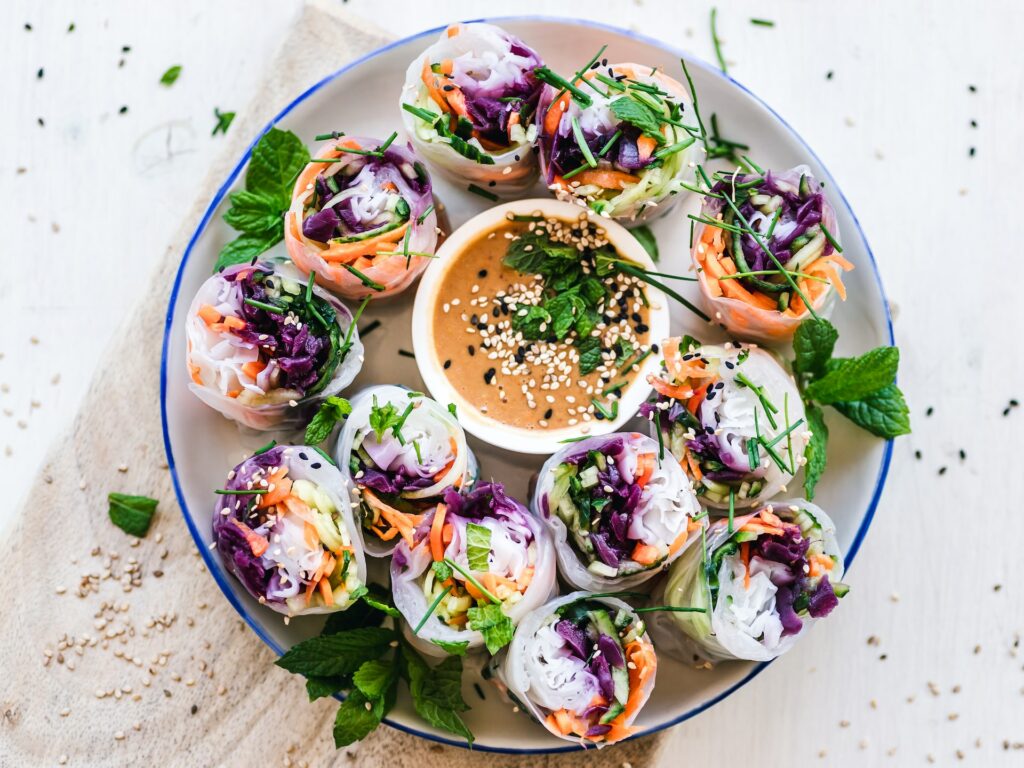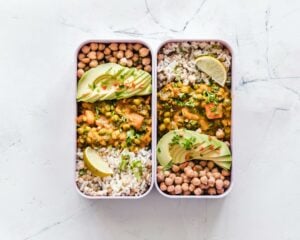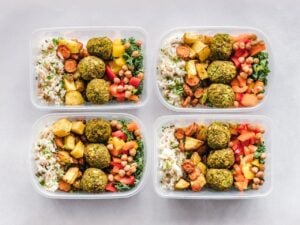Meat-Free Morsels: How to Go Vegetarian

There are many benefits of being a vegetarian, but many people get caught up on what to eat on a vegetarian diet so much that they lose sight of the actual goal. That goal is to eat sustainable, healthy foods that do not cause so great an impact on the environment as the standard American diet!
Maybe they’re concerned about the environment or animal welfare, or maybe they want to improve their own health. Whatever the reason, making the switch to a vegetarian diet can be a big change.
Before making any big changes, it’s always a good idea to do your research. This is especially true when it comes to your diet. Learn about the different types of vegetarianism and what each entails to discover the best way to go vegetarian for you!
This will help you decide which approach is right for you. There is no “right” way to be a vegetarian, so find what works best for you and your lifestyle.
If you’re used to eating meat at every meal, going cold turkey (pun intended) might be a bit overwhelming. Instead, start by gradually cutting back on meat and incorporating more vegetarian meals into your diet.
You might want to start by having meatless Mondays or going meat-free for one meal a day. Once you’re comfortable with that, you can start increasing the number of meat-free meals you have each week.
But, we get it, we get it–if you’re not fully ready to make the switch to a meatless diet–but still want wholesome, hearty, perfectly-proportioned meals, our Classic Plan is always a great option.
What Is a Vegetarian Diet?
What is a vegetarian diet, you may ask? A vegetarian diet is one that does not include meat, fish, poultry, or dairy items. Some people choose to be vegetarian for ethical reasons, while others do it for health reasons.
Others may want to learn how to go vegetarian just for the sake of understanding their own diet better, or to discover how to incorporate more vegetarian and vegetable-based recipes into their dietary plans to balance out their lifestyle.
Speaking of which, a great introduction to the balanced semi-vegetarian diet can be found with our Lean and Clean plan, which does a fantastic job of balancing vegetables, grains, fruits, and meats into one delicious package–this can be a great option for people who are still on the fence about going full-veg.
Plus, meal kit delivery services are great for starting new dietary plans, as the perfectly-proportioned meals can take the stress and choice out of eating the right amount to meet your goals–whatever they may be. If you’re interested in learning more about meal kit delivery services, you can check out our article on the Benefits of Meal Kit Delivery Services.
Anyways, there are many different types of vegetarianism: but all vegetarians have one thing in common. They do not eat meat!
Vegetarians may eat different combinations of fruits, vegetables, grains, legumes, nuts, and seeds. Some vegetarians also eat eggs and dairy products, while others do not. The health benefits of a vegetarian diet are numerous.
A study performed by the Harvard Health Publishing Journal of Harvard Medical School has shown that vegetarians have a lower risk of:
- Heart disease
- Obesity
- Cancer
- Other chronic illnesses
They also tend to have:
- Lower blood pressure
- Cholesterol levels
If you want to learn how to become vegetarian, there are many resources available to help you make the transition. You can find cookbooks, websites, and support groups that will help you make the switch to a meat-free diet.
Speaking of which, Gobble does a great job of providing a variety of meal plans, including vegetarian. If you’re interested in learning How It Works, make sure to read our information page on our meal-plan packages!
Benefits of Being a Vegetarian
There are many benefits of being a vegetarian. For one, vegetarians tend to be healthier than those who eat meat. The American Heart Association found that vegetarians have lower rates of heart disease, cancer, and obesity.
Additionally, an investigation performed by Shrink that Footprint found that vegetarians also have a smaller carbon footprint than meat-eaters. Raising livestock requires a lot of resources, including water, land, and feed. This takes a toll on the environment.
Also, choosing not to eat meat is a form of animal welfare. Animals raised for food often live in cramped, unsanitary conditions. They are also typically given hormones and antibiotics to keep them alive and maximize their growth.
So, if you’re considering going vegetarian, know that you’re doing yourself—and the planet—a favor!
Also, if you want to check out some of the most highly-rated vegetarian mealkit delivery services, you can check out our Best Vegetarian Meal Delivery Services to find a plan that best matches your lifestyle.
It’s Really Good For Your Heart
A study performed by the American Journal of Clinical Nutrition found that people with a vegetarian diet are less likely to be hospitalized or die from heart-related conditions. Even so, food choices are significant–whether vegetarian or not.
Can Reduce the Risk of Cancer
A study by PubMed Central found a few benefits that can reduce the chance of developing cancer.
One of these studies found that vegetarian diets can protect against female-specific cancers.
Additionally, vegetarian diets can protect the gastrointestinal tract due to fewer overall amounts of carcinogens and red meat.
Lowers Blood Pressure
Vegetarian diets can also be great for lowering blood pressure!
Another PubMed Central study found that patients with vegetarian diets had a lesser chance of developing hypertension, too.
How to Start a Vegetarian Diet
If you’re considering making the ‘big switch’, congratulations, but you might be wondering how to start a vegetarian diet.
But starting a vegetarian diet can seem daunting, especially if you’re used to eating meat at every meal.
Here are a few tips to help you make the transition to a vegetarian diet:
1. Reduce Your Meat Intake
If you’re not ready to give up meat entirely, start by cutting back. Have meatless Mondays, or try vegetarian versions of your favorite meals.
2. Load Up On Veggies
A vegetarian diet should be built around fruits, vegetables, whole grains, and legumes. These foods are packed with nutrients and fiber, and they’ll help you feel full and satisfied.
3. Get Enough Protein
Many people worry about getting enough protein on a vegetarian diet, but it’s actually quite easy to do. Beans, lentils, tofu, and quinoa are all great sources of vegetarian protein.
If you’re interested in learning how to get more protein into your diet as a vegetarian, be sure to check out our comprehensive plant-based protein guide!
4. Gradually Introduce New Foods
Trying new foods can be a little daunting, but it’s also part of the fun of vegetarianism!
What to Eat on a Vegetarian Diet
If you’re thinking about becoming a vegetarian, you may be wondering what foods you can and cannot eat. While there are many different types of vegetarian diets, most vegetarians eat a diet that includes vegetables, fruits, grains, beans, nuts, and seeds.
Some vegetarians also eat dairy products and eggs, but most do not eat meat, poultry, or fish.
Also, we’ve got some fantastic resources on how to select fresh ingredients and how to properly read food labels if you’re concerned about making the right dietary choices.
Here are some examples of foods that you can eat on a vegetarian diet:
Vegetables
You can eat broccoli, carrots, celery, kale, tomatoes, potatoes, sweet potatoes, and many more!
Fruits
Fruits can be a great source of fiber, natural carbohydrates, and a little sweetness on the side! You can eat apples, bananas, various berries, oranges, and so much more.
Grains
Giving up meat can be really, really tough. Fortunately, grains can be a great replacement for meat and can satisfy that craving for a hearty, bready meal.
Make sure to give whole-grain bread and pasta, quinoa and rice, lentils, and chickpea-based grains a try!
What Not to Eat on a Vegetarian Diet
If you’re a vegetarian, you may think you already know what not to eat – no meat, poultry, or fish. But there are other foods that vegetarians should avoid eating as well.
Here is a list of foods to avoid on a vegetarian diet:
Honey
Surprisingly, honey is actually not vegetarian, since it’s made by bees, and bees are considered animals!
Gelatin
Gelatin is made from animal collagen and is not vegetarian.
Rennet
Rennet is used to make cheese and other dairy products and is made from animal stomach lining.
Isinglass
Isinglass is made from fish bladder and is used to clarify beer and wine. It is not vegetarian.
Shellac
Shellac is made from beetle shells and is used as a food glaze, constituting it a non-vegetarian product.
Why You Should Go Vegetarian
To wrap things up (preferably in a lettuce wrap) on this discussion about vegetarianism, there are a few key points to remember about why the vegetarian dietary philosophy is always a safe bet. It’s healthy for you, can replace many of the nutrients that we aren’t getting from processed foods and excess meat, it helps to reduce animal cruelty and greenhouse gas emissions, and last but not least–it’s delicious!



